The difference of taste and flavor between Colombian decaf coffee and general coffee characteristics of Swiss water decontamination treatment
Professional coffee knowledge exchange more coffee bean information please follow the coffee workshop (Wechat official account cafe_style)
In modern society, coffee is not only used to refresh, but also a way of life. Decaffeinated coffee is starting to appear on the market to satisfy people who consume caffeine and interfere with their sleep, or who prefer coffee rather than caffeine, is undoubtedly a good choice. After the emergence of decaf coffee, many people question whether decaf coffee will affect health, and so on. Qianjie thinks that it is nonsense to put aside the question of intake of everything, whether it is caffeinated coffee or decaffeinated coffee. Daily intake is beyond the scope of the human body, even drinking water will have corresponding problems. So Qianjie should remind everyone who likes coffee, "Coffee is delicious, remember not to drink too much." All right, to get to the point, what is decaf and how decaf is made? the front street started with this and put on the shelves a decaf bean from Colombia to find out.

What is decaf? Is decaf really decaf?
In general, the weight ratio is used to measure the caffeine content of coffee beans. Arabica coffee beans have a caffeine content of 0.9% Mel 1.4% (an average of 1.2%), while Robsta has a caffeine content of 1.8% Rue 4% (average 2.2%). Decaf can be divided into natural decaf and artificially treated decaf (decaf). The more common natural decaf coffee is Coffea Laurina, which has half the caffeine (0.6%) of regular Arabica. Unlike other artificially treated decaf coffees, pointed bourbon is genetically degraded, resulting in lower caffeine content and better flavor than the average Arabica coffee tree. For artificially decaffeinated low-caffeine coffee, the EU standard for this type of decaf coffee is that the caffeine content after treatment does not exceed 0.1% of raw beans, while the FDA standard of the US Food and Drug Administration is less than 3% of the original caffeine content.
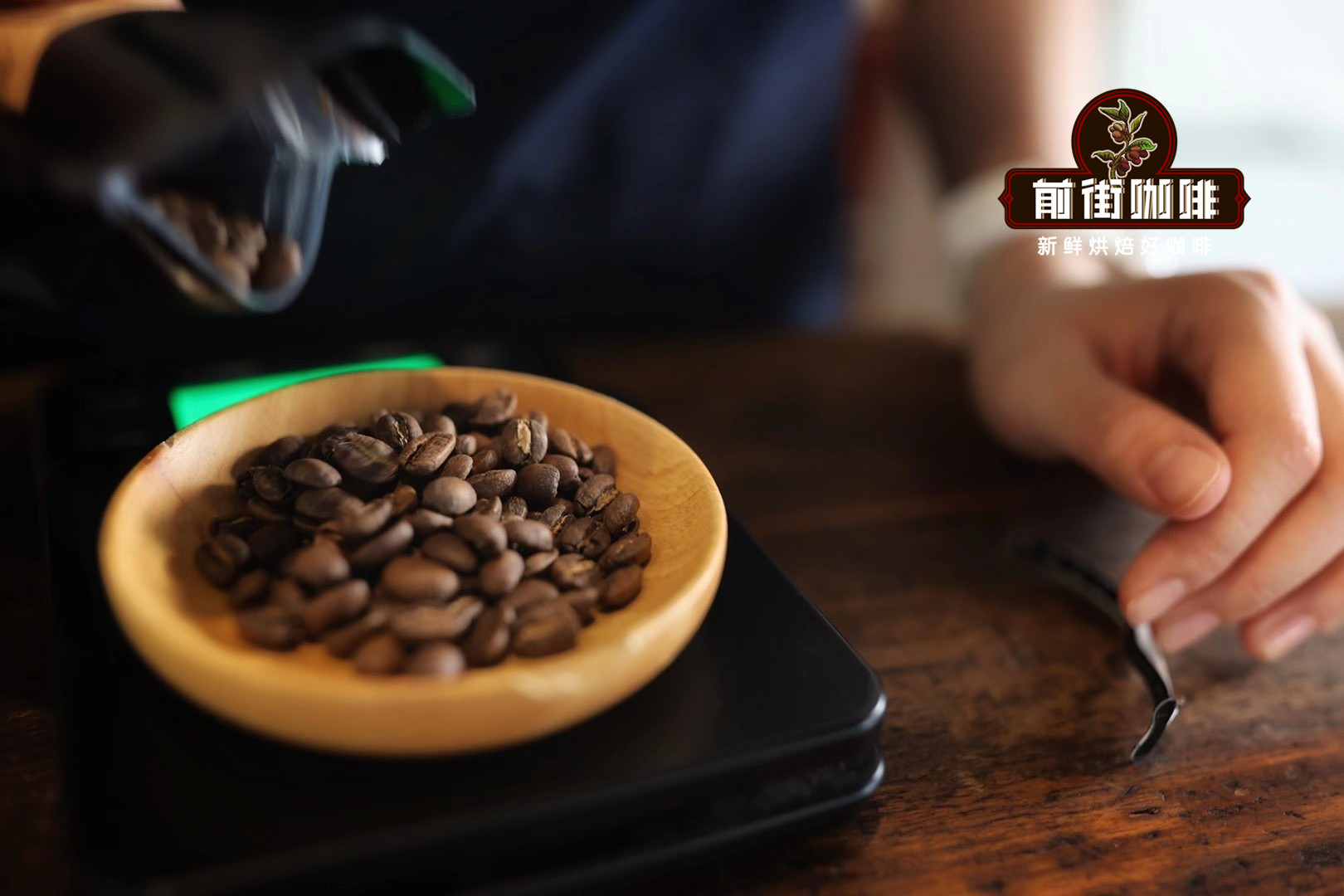
Does decaf mean no caffeine at all? It's not. Qianjie Coffee believes that although decaffeinated coffee extracts a large amount of caffeine, it still remains 2%, 3%, that is, each cup of decaf espresso still contains about 0-7 mg of caffeine, although there will still be caffeine, but compared with ordinary espresso, decaf caffeine will not be affected by most people.
How does decaf coffee extract caffeine?
With the development of coffee market, there are many methods to remove caffeine, which can be divided into direct / indirect solvent treatment, supercritical carbon dioxide treatment, Swiss water treatment and mountain spring water treatment.
Direct solvent treatment (direct contact method)
Direct solvent treatment is the use of dichloromethane, ethyl acetate and other chemical solutions to dissolve caffeine. First of all, steam is used to open the stomata of the raw coffee beans, and the dichloromethane solvent is directly added to the coffee beans. After the solvent and caffeine are fused, the caffeine-filled solvents are washed out, and the coffee beans are boiled again to remove all residual solvents. There are concerns about using dichloromethane as a solvent because it is suspected that long-term exposure increases the risk of cancer. But in fact, FDA limits the dichloromethane content of decaf to 0.001%, which is actually lower than that, with little side effect.
The process of using ethyl acetate as a solvent is the same, ethyl acetate usually comes from sugar cane, so when used, the direct solvent method is sometimes referred to as sugarcane decontamination. This method is usually used in de-causation in Colombia. But ethyl acetate is a highly flammable substance, so it is more dangerous.
Swiss water treatment method
This is one of the most traditional methods of extracting caffeine, using this commercially developed and efficient treatment.
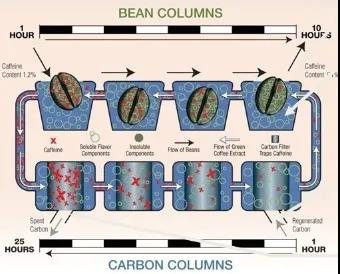
The step of the Swiss water treatment method: soak the raw coffee beans in hot water, which is called "flavor filled water" (Flavor-charged Water) in the Swiss water treatment method. This water contains all the flavor factors that are necessary in the raw coffee beans, but lacks caffeine. This special water is the most important medium in the next decaffeinated process. The coffee beans are filtered out after the flavor is filled with water, and the flavor-filled water will filter out the caffeine with an activated carbon filter, and the rest is hot water full of pure flavor factors, and then re-soak the filtered coffee beans with hot water full of pure flavor factors. let the coffee beans reabsorb the coffee flavor.
Supercritical carbon dioxide treatment
This treatment is to first let the coffee beans absorb water and expand, and the caffeine molecules are loose in the coffee beans. Add liquefied carbon dioxide and create more than 100 atmospheric pressure in water. Carbon dioxide is highly selective and does not "damage" the carbohydrates and proteins in coffee beans while dissolving caffeine, ensuring that the flavor of coffee beans is not destroyed. Liquid carbon dioxide that takes away caffeine can also be removed and recycled.
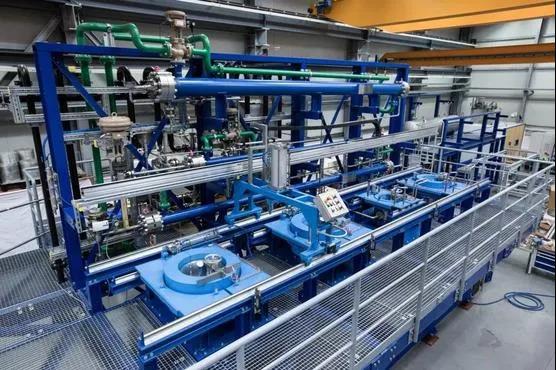
Coffee made from decaffeinated carbon dioxide has a lower burden on the human body, and according to the study, this method extracts more coffee than the direct solvent method, and the cost of this method is much higher than that of the direct solvent method.
Mountain spring water treatment
Similar to Swiss water treatment, another special kind of water is used to extract caffeine from glaciers. The company Descamex says it uses a special filter to remove caffeine. After treatment, you will get a caffeine-free aqueous solution, which also dissolves the solid substance of coffee and can be reused in the decaffeinated process.
Does decaf coffee taste bad?
Combined with the above decaf treatment, Qianjie Coffee believes that the bad taste of decaf coffee is not caused by the treatment. Because most decaf coffee in the raw materials to choose some cheap, commercial grade coffee beans. Modern decaffeinated technology is quite complex, and in most cases, companies that produce decaffeinated coffee will naturally prefer some varieties of coffee beans with high caffeine content (such as robusta beans) when choosing raw materials. Coffee beans have been untasty before decaffeinated beans. Like other coffee beans sold in coffee shops, low-caffeinated coffee can perform very well even after decaffeination if it starts with high-quality Arabica beans from the beginning of raw beans.

Qianjie Coffee represents Coffee beans-- Columbia Huilan Swiss Water treatment decaf

Country of origin: Colombia
Producing area: Cymbidium
Altitude: 1750 m
Variety: iron pickup, Kaddura, Castillo
Treatment method: Swiss water treatment
Grade: Supremo
Production season: 2020
Colombian cymbidium producing area
Colombian coffee beans are well-known in the world, and the high-quality water-washed beans have always been the representative of high-quality coffee. Coffee beans exported from Colombia, after specific gravity inspection and manual picking of defective beans, are bagged after layers of strict inspection, so the quality of Colombian coffee can be guaranteed.

Colombia huila of Colombia belongs to the selected alpine coffee beans of the Colombian state company, which is known as the national treasure of Colombia. With its superior geographical and climatic conditions, Colombian coffee has always maintained high quality. Colombian coffee beans, which usually do not have a special market brand name, are from the National Coffee Farmers' Union of Colombia (national federation of colombia coffee growers) and have always been famous for their strict quality control and active promotion.
Colombian low-caffeine coffee bean varieties
This batch of decaf includes three varieties of iron pickup, Kaddura and Castillo. Iron pickup, one of the oldest Arabica species in the world, is loved for its delicious and sweet flavor, but it has been replaced by many high-yield coffee varieties in Colombia because of its low unit yield. Kaddura is a natural mutant of bourbon, its flavor is comparable to or slightly worse than bourbon beans, more importantly, super adaptability, no shade trees, direct exposure to the sun can also be full of vitality, commonly known as exposure coffee (Sun Coffee), can adapt to high-density planting.

Castillo, based on Colombian species, was crossbred with Kaddura until the tenth generation. Although it was not favored by practitioners in the industry at its debut, there has been no shortage of elegant and meticulous batches on the market in recent years.
Raw bean grade
This batch of raw coffee beans is Supremo. In the Colombian coffee bean system, Supremo is the highest grade, while the preferred Excelso is smaller and more common. Colombian coffee beans have a balanced flavor, rich taste, unique flavor and relatively full body, with a touch of vanilla and dark chocolate on the flavor when roasted moderately.
How to bake Colombian low-caffeine coffee beans on the front street
Qianjie bakers use medium firepower to climb steadily, turn yellow point at about 6 minutes and 15 seconds, then reduce firepower to open the throttle into Mena reaction, open the throttle when an explosion, maintain firepower, the temperature is about 183.2 ℃, 2 minutes and 30 seconds after an explosion.
The furnace temperature is preheated to 200 degrees Celsius, the throttle is opened at 3jing30s, the firepower is adjusted to 130, the temperature recovery point is 1: 32 ", keep the firepower, 6: 15" turns yellow, the smell of grass disappears, enters the dehydration stage, the firepower is raised to 140, the throttle is opened to 4, and when the throttle is opened to 151 degrees, the firepower is reduced to 110 again.

After 8 minutes of dehydration, there are wrinkles and black markings on the bean surface, and the smell of toast changes to coffee, which is a prelude to an explosion, when the firepower remains the same, the throttle opens to 5, and listen to the sound of an explosion. When it starts to explode at 9: 57 ", all the throttle doors are open." The development time after the first explosion was 2 minutes and 30 seconds to 194.2 ℃.
Qianjie Cup test report
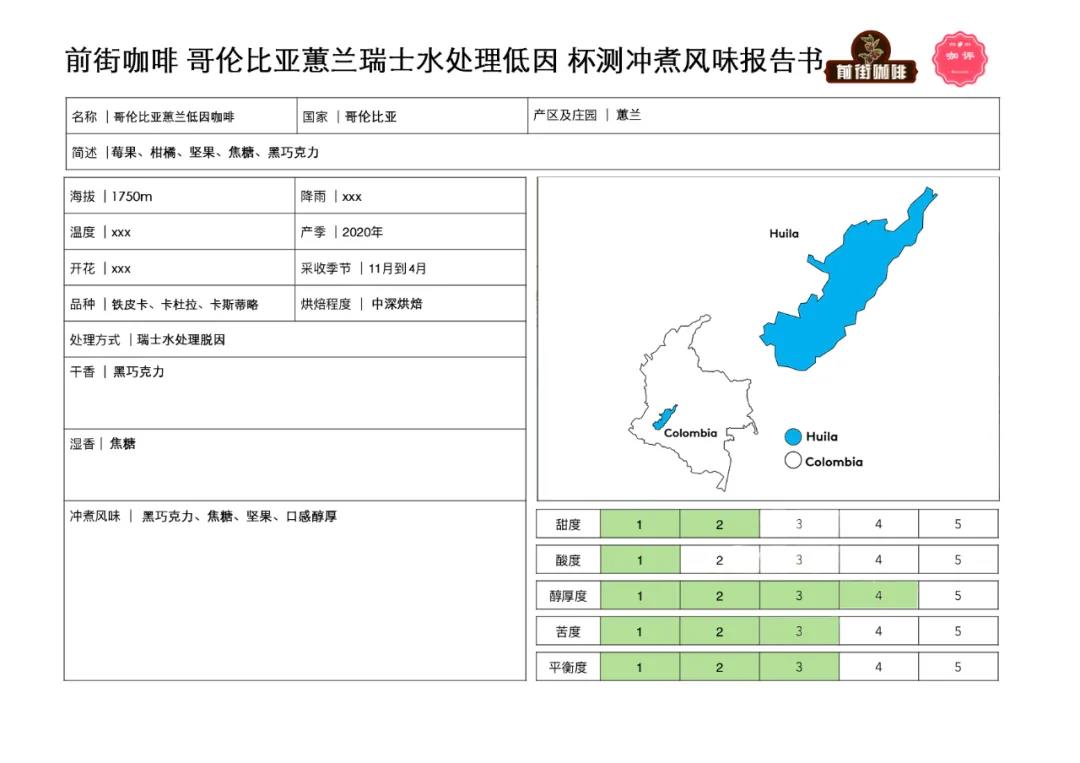
The suggestion of cooking in Qianjie
Filter cup: Kono filter cup
Water temperature: 90 ℃
Powder content: 15g
Powder / water ratio: 1:15
Degree of grinding: medium and coarse grinding (67% of Chinese standard No. 20 screen pass rate)
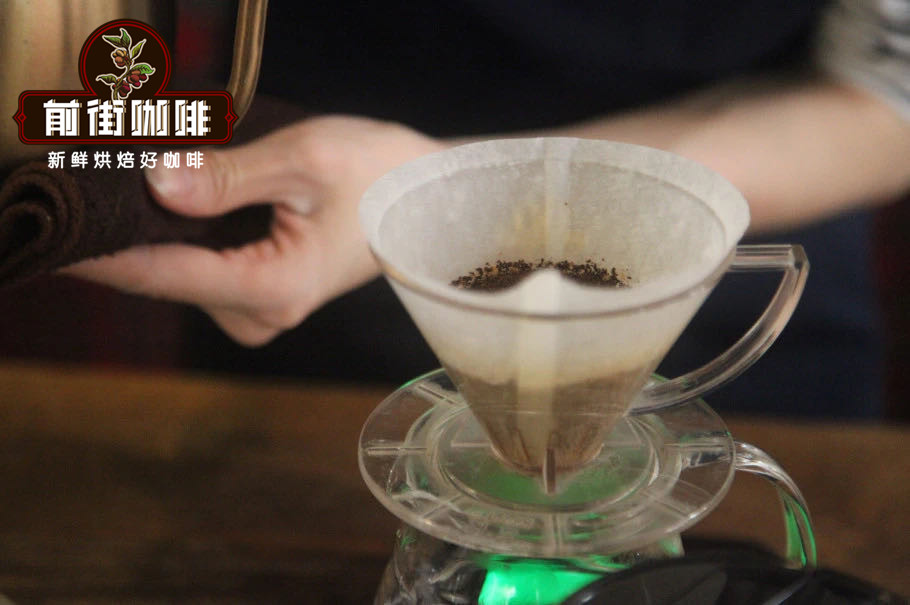
Cooking technique: three-stage extraction. Steam with 30 grams of water for 30 seconds, small flow circle injection to 125 grams, continue to inject water to 225 grams when the water level is about to expose the powder bed, remove the filter cup when the water level is about to expose the powder bed, and the cooking time is 3 minutes.
Cooking flavor: dark chocolate, caramel, nuts, mellow taste.
For more boutique coffee beans, please add private Qianjie coffee on Wechat. WeChat account: kaixinguoguo0925
Important Notice :
前街咖啡 FrontStreet Coffee has moved to new addredd:
FrontStreet Coffee Address: 315,Donghua East Road,GuangZhou
Tel:020 38364473
- Prev
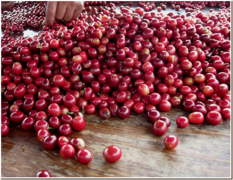
Columbia Snow Mountain Coffee Santa Marta Mountain-Bayernado single Coffee Bean Flavor
Professional coffee knowledge exchange more coffee bean information please follow the coffee workshop (Wechat official account cafe_style) the basic knowledge and flavor description of Colombian coffee Colombia Santa Marta Vallenato Colombia is located in northwest South America, bordering Venezuela and Brazil in the east, Ecuador and Peru in the south, Panama in the northwest and the Caribbean Sea in the north.
- Next
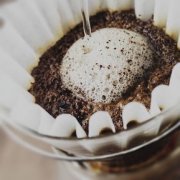
The parameters of hand-made Colombian decaf coffee suggest that the flavor and taste characteristics of Swiss water-treated decaf coffee
Professional coffee knowledge exchange more coffee bean information please pay attention to the coffee workshop (Wechat official account cafe_style) Colombian coffee basic knowledge and flavor description of Colombian low-caffeine coffee brewing parameters suggest hand-flushing Colombian decaf beans. 15g powder, medium fineness grinding (sugar size), v60 filter cup, 88-89 degrees water temperature, 30g water injection for the first time.
Related
- Detailed explanation of Jadeite planting Land in Panamanian Jadeite Manor introduction to the grading system of Jadeite competitive bidding, Red bid, Green bid and Rose Summer
- Story of Coffee planting in Brenka region of Costa Rica Stonehenge Manor anaerobic heavy honey treatment of flavor mouth
- What's on the barrel of Blue Mountain Coffee beans?
- Can American coffee also pull flowers? How to use hot American style to pull out a good-looking pattern?
- Can you make a cold extract with coffee beans? What is the right proportion for cold-extracted coffee formula?
- Indonesian PWN Gold Mandrine Coffee Origin Features Flavor How to Chong? Mandolin coffee is American.
- A brief introduction to the flavor characteristics of Brazilian yellow bourbon coffee beans
- What is the effect of different water quality on the flavor of cold-extracted coffee? What kind of water is best for brewing coffee?
- Why do you think of Rose Summer whenever you mention Panamanian coffee?
- Introduction to the characteristics of authentic blue mountain coffee bean producing areas? What is the CIB Coffee Authority in Jamaica?

